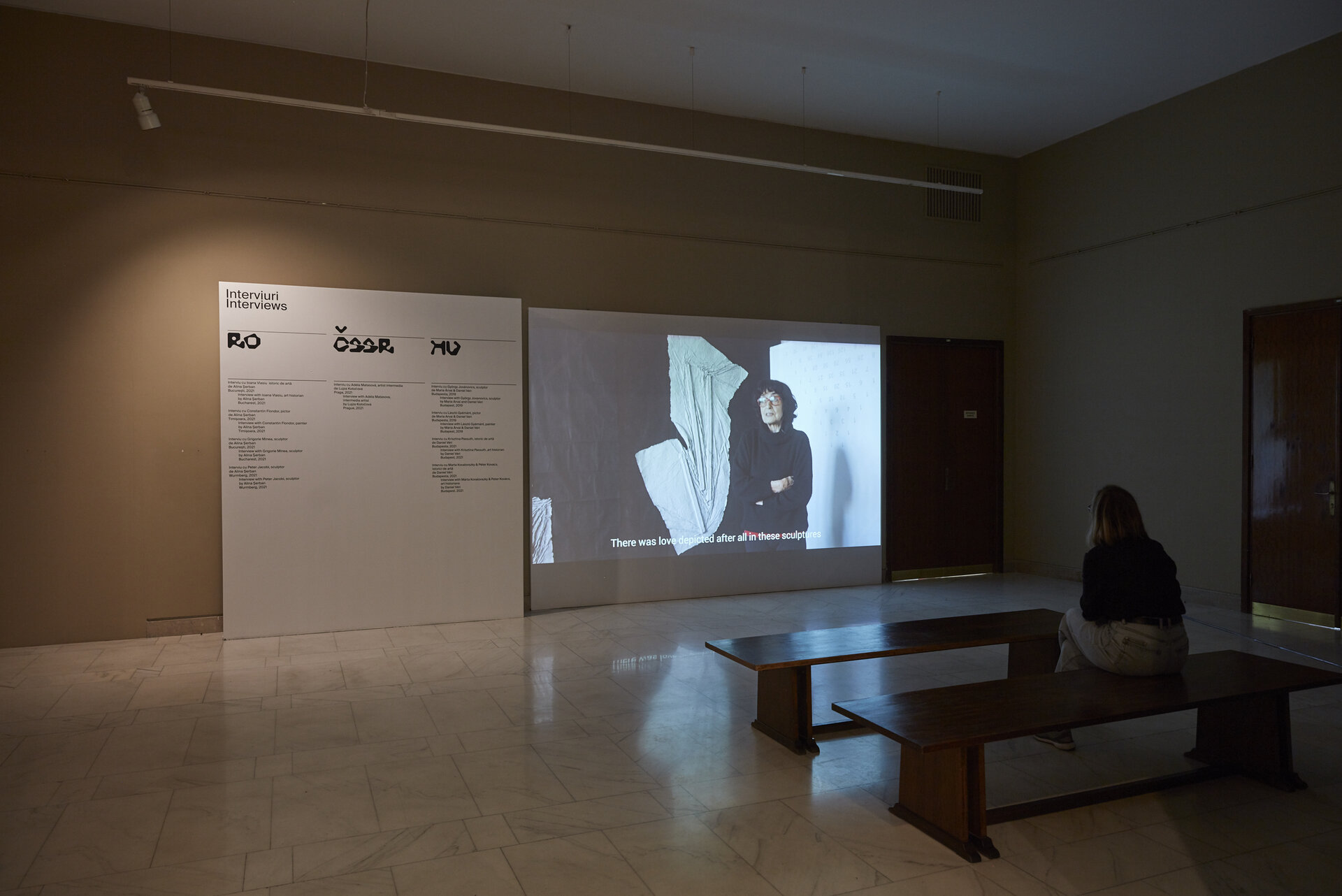
The Modern Idol. Henry Moore in the Eastern Bloc
Authors’ Comment
“The Modern Idol. Henry Moore in the Eastern Bloc” is a documentation of the exhibition of the sculptor Henry Moore, which toured Bucharest, Bratislava, Prague and Budapest in 1966-67. Initiated by three art historians from Romania, Hungary and the Czech Republic, the exhibition is a collective research project of what was at the time the largest international retrospective of Henry Moore's work. The research explores the stories of these shows in Bucharest, Bratislava, Prague and Budapest, investigating their role in taming the political tensions and the conflicting ideologies after 1960. The exhibitions were the result of a cultural exchange programme with the Eastern Bloc managed by the British Council: in exchange for hosting Moore’s show, these countries had the possibility to organise similar events in the UK. The timeline presented in the current exhibition explores such bilateral connections between the UK and the three socialist countries. Furthermore, it highlights events related to Moore that took place in the Eastern Bloc (Poland, Bulgaria) and Yugoslavia. Henry Moore’s touring exhibition represents an exceptional moment in the post-war history of exhibitions in the Eastern Bloc. Revisiting such an event from a transnational point of view can significantly contribute to the understanding of the intricacies of 1960s cultural politics.
The exhibition in the Kretzulescu rooms at the National Museum of Art of Romania is structured in 3 distinct areas, separated by simple panels placed between the four massive columns of the room, areas that show the route of the exhibition from 1966-67 in the three countries. To these is added a large panel placed on one of the side walls of the room, which presents the chronology of bilateral connections between England and the three socialist countries resulting from the cultural exchange program with the Eastern Bloc coordinated by the British Council and other events related to Moore which took place in Poland, Bulgaria and Yugoslavia. Color accents on the panels that separate the 3 zones mimic the patinated bronze of Moore's works placed in the public space. The second room contrasts with the main room by its dim lighting, and is dedicated to the projection of a series of interviews with witnesses of the original exhibitions. The entrance to the exhibition is dominated by a large photograph of the work "Working Model for Locking Piece" from 1962, the only work by Moore in Romania, which is located in the courtyard of the museum. Scattered throughout the exhibition are four platform objects made of BCA blocks, reminiscent of the plinths of many of Henry Moore's sculptures placed in public space. The plinths were also thought as an invitation, unfortunately not realized, to use them as a support to performatively comment on Moore's sculptures, following the example of the work "Pose Work for Plinths" by the artist Bruce McLean.
- Exhibition Design in 2 parts: Romanian Design Week 2020 / Central Exhibition & Diploma 2020
- Three Sisters. An (Un)usually Free Script Based on Chekhov
- Diploma 2019. Exhibition of architecture, art and design university graduates
- Pavilion Untold - Hamza X BT
- Leviathan. In the guts of the collection. Transformation of the second floor of the National Museum of Contemporary Art
- Year One. First Year. Model / Vocabulary / Tools
- Beyond the legend. Neagoe Basarab
- “Herbarium” after “The Book of Plants and Animals” by Simona Popescu
- “Meerkats House” by David Drabek
- The Bucharest of Mircea Eliade
- The Modern Idol. Henry Moore in the Eastern Bloc
- “Journey by Moonlight” after Antal Szerb
- MLMSN_IZO
- Batthyaneum. Astro-stories and mechanical animations
- Coronation Festivitie
- L'Année dernière à Malmaison
- From near to far. Visual mappings of the 2 Mai and Vama Veche space
- Smoke Screens
- Space within space
- Bildfahrzeuge (Image Vehicles). A Peter Jacobi Retrospective / National Museum of Contemporary Art
- Volume of a sleep
- Márta Jakobovits / The Road Travelled / National Museum of Contemporary Art
- This Museum is for you!












